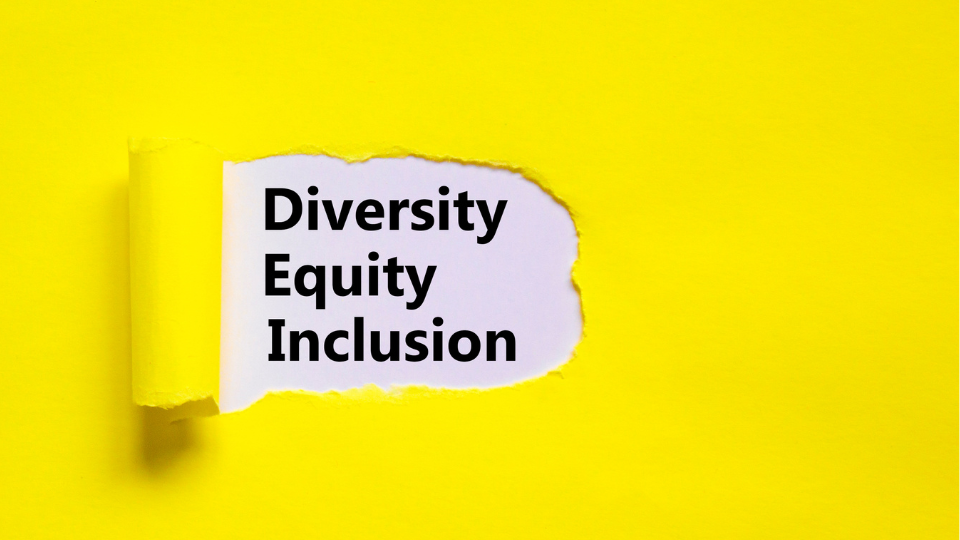Putting DEI at the forefront of your next influencer marketing campaign
Consumers not only seek brands that prioritize the many facets of diversity – such as race, ethnicity, sexual orientation, gender identity, neurodiversity, religion, age and physical and mental abilities – but actively avoid brands that don’t practice inclusion within marketing campaigns. Making diversity in influencer marketing a priority is essential.
The massive (and growing) creator economy presents brands with an opportunity to involve diverse influencers from all walks of life. Despite the availability of representative creators and clear demand from consumers, emphasizing DEI remains difficult for some brands due to a lack of understanding of the importance of DEI, lack of commitment to DEI initiatives from the brand’s leadership, unchecked unconscious biases, resistance to change, etc.
However, these struggles shouldn’t deter brands from prioritizing DEI, but motivate them.
How can brands take proactive steps when developing influencer marketing campaigns that are inclusive, accessible and representative of their target audience? We spoke to our internal strategists to pull the following insights together.
Why is diversity in influencer marketing important?
- Representation
- Business opportunity
- Cultural relevance
- Values visibility
It is estimated that the global influencer marketing spend will reach $22.2 billion by 2025. A significant share of this investment is earmarked for engaging younger demographics. Given that nearly half of Gen Z identifies as BIPOC, prioritizing collaborations with representative influencers is imperative for brands to maintain relevance.
“Brands can’t afford to ignore that people are making purchasing decisions based on representation.”
In addition, the buying power of historically underrepresented groups is increasing. The LGBTQ population holds an estimated $3.9 trillion in purchasing power and Black consumers are expected to hold $1.7 trillion in purchasing power by 2030. Furthermore, 69% of Black consumers are more likely to proactively seek out a brand with advertising that positively reflects their race/ethnicity and 68% of LGBTQ consumers are more likely to purchase from a brand with advertising that positively reflects a variety of sexual orientations.
Brands can’t afford to ignore that people are making purchasing decisions based on representation. Diverse audiences expect brands to partner with influencers who represent their interests and values, as well as the brand’s values.
Brands that intentionally incorporate diversity in their influencer campaigns also ensure that campaigns are culturally relevant. BIPOC creators, like Jackie Aina and Keith Lee, have significant cultural influence, and as brand partners, can infuse needed perspectives. This, in turn, ensures all campaign elements from messaging to design are not out of touch. Diverse influencer partners can help brands avoid appropriation, misguided messaging and superficial or performative actions.
Additionally, diversity in influencer marketing is about more than just representation. It’s about ethics and personal connection. A recent study stated that 81% of consumers tend to purchase products or services from brands whose values align with their own. Making brand values visible through diverse influencer partnerships is an effective way to let consumers know what you stand for.
How do you incorporate diversity in influencer marketing?
- Start with an inclusive planning team
- Define business goals, objectives and brand values
- Evaluate unconscious bias and discover voices/faces missing in historical marketing
- Give diverse influencers creative freedom
- Be aware of potential mishandling
- Practice equitable compensation and fair contracting
Start with an inclusive planning team
Having a diverse team is the first step and a crucial part of developing an inclusive campaign. Diversity in the campaign planning team provides brands with varying experiences and perspectives. Teams should be somewhat reflective of target audiences to ensure they understand their pain points, interests and lived experiences.
If your internal team isn’t representative of your audience or lacks diversity, consider outside consulting. These could even be influencer partners! (Of course, always pay for their contributions and input.) Choosing the right team sets the tone for the rest of the planning process, impacting everything from influencer vetting to content development.
Define business goals, objectives and brand values
Another baseline step includes having clarity on what diversity and inclusion mean for your brand. LinkedIn shares that, “You can start by reviewing your mission, vision and values, and identifying how they align with the needs and expectations of your audience. Then, you can set specific and measurable goals, such as increasing the representation of certain groups, addressing social issues, or challenging stereotypes.”
This work also happens outside of the marketing team. Having top-down commitment to DEI is necessary for authenticity. Without company-wide buy-in, influencer campaigns risk appearing superficial.
Alignment of values and objectives should inform the influencer vetting process, ensuring you’re partnering with a right-fit creator for your campaign. For example, a hardware or paint brand that values ingenuity and hard work may be looking to expand its reach to female audiences who live in the Northeast region of the United States, combatting stereotypes that women can’t be “handy” in their own homes. Going a step further, their campaign objective could be to educate this audience on how to incorporate their products into more home projects.
With these details outlined, the brand can focus on identifying influencers who not only live in the Northeast region and make educational home project content, but have a large female following and talk about the importance of sweat equity and infusing creativity. Knowing these parameters makes it easier to say ‘no’ to influencers who may seem like the right fit – Northeast region, educational content, female following – but talk about how to cut corners on projects and hack the designs of others.
When you partner with an influencer, you tie your brand to theirs. What they stand for – or don’t – reflects on your organization. The key is identifying aligned partners who feel comfortable elevating your brand message.
Evaluate unconscious bias and discover voices/faces missing in historical marketing
It’s important to emphasize that unconscious biases don’t solely exist in personal opinions or backgrounds, but in data as well. For example, past purchasing data may show that men over 50 years old are your primary demographic. Be aware that this may not show the full picture.
Men over 50 years old could appear to be your top customer group because your marketing has historically prioritized that audience, not because they are the only consumers who use (or could use) your product. Through questioning of historical data, bias evaluation and target audience research, you could find that women between 28-56 are primed potential customers – they just need to be effectively represented in marketing materials and campaigns before considering a purchase.
Stanley Cup’s success is a great example. Sierra Nicole explains in a LinkedIn post that Stanley’s primary target audience was working men who needed to stay hydrated on job sites. But when a popular blog for women posted about the Stanley Cup, a new audience went wild for the product. Instead of brushing off this sudden surge in sales and sticking with historical strategies, Stanley’s new Global President decided to go all in with the new audience. They added new colors, pursued influencer partnerships and did collaborations with popular brands to elevate the Stanley Cup to what it is today.
“When working to advance diversity in influencer marketing campaigns, it’s important to act objectively and audit your evaluation criteria consistently.”
In addition to checking possible data biases in your marketing, your brand should also account for individual biases, especially in influencer research. Beauty brands, like Tarte Cosmetics and Pink Honey, have received much backlash due to a lack of diversity in their influencer campaigns. In the above instances, the makeup (no pun intended) of their influencer marketing team is all-white and the influencers who were engaged in both campaigns reflected that. Individual biases, whether intentional or unintentional, played a significant role in each brand’s lack of diversity in influencer marketing.
This is where having a representative team is crucial to combatting the individual biases any team members might have, and serves as quality control to ensure you aren’t unintentionally excluding potentially perfect-fit, diverse influencer partners.
When working to advance diversity in influencer marketing campaigns, it’s important to act objectively and audit your evaluation criteria consistently. Adjust accordingly once you identify potential gaps that were previously overlooked.

Give diverse influencers creative freedom
Have an open mind when partnering with diverse influencers. Remember that you chose to work with them because their style and content resonate with your target audience. Allowing them to freely express their opinions and experiences without over-imposing your brand will help to retain the creator’s impact.
However, don’t neglect to provide creative guidelines and expectations during the planning phase to ensure a successful partnership. Campaigns are a collaborative exercise, so providing a starting point while still allowing for creative freedom is best for reaching campaign goals.
At Belle, we provide our influencers with comprehensive creative briefs that include concept ideas, brand guidelines, exact deliverables, timelines and highlight disclosure requirements. Even with set parameters, we allow our influencer partners space to incorporate their personal touch and audience expertise.
Beware of potential mishandling
Implementing diversity in influencer marketing doesn’t come without challenges. We’ve mentioned the need to check unconscious biases that might exist within your brand team, but you should also be aware of common pitfalls. Tokenism, stereotyping and/or cultural appropriation could lead to unnecessary controversy for your campaign if not addressed earlier in the planning phase.
Here are foundational checks to revisit throughout the planning process for your campaign:
- Is the potential partner list representative of the brand’s key consumer demographic?
- Have you identified + included influencers of varying races, ethnicities, cultures, sexual orientations, etc.?
- Could the campaign concept be deemed inappropriate and/or disrespectful to specific groups or cultures?
- Is your brand’s social media diverse and inclusive?
Each of these areas can put strain on your campaign (and your brand) and signal to your target audiences inauthenticity in your DEI efforts. Taking an intentional approach through research and awareness will help you avoid coming across as disrespectful and show you’ve done the necessary work to “get it right.”
Practice equitable compensation and fair contracting
Brands have an opportunity to address these pay inequities through compensation models and fair contract negotiations, which play a crucial role in the promotion of diversity in your campaigns and the influencer marketing industry as a whole.
PRO TIP: The 2023 Influencer Pay Equity Guide, a collaborative guide published by ANA, 4A’s, PR Council and their members, is a great resource for brands looking to establish clear standards for equitable campaigns.
Reaffirming commitment to diversity in influencer marketing
Brands that prioritize diversity in influencer marketing not only contribute to a more equitable industry, but position themselves to connect authentically with a diverse consumer base, driving brand loyalty and long-term success.
Embracing diversity is not just a moral imperative, but a business imperative in an era where consumers actively seek and support brands that reflect their values and identities.






